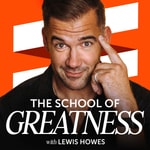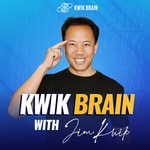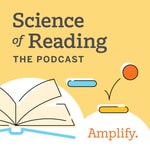Effective Teaching – Details, episodes & analysis
Podcast details
Technical and general information from the podcast's RSS feed.
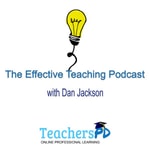
Effective Teaching
Dan Jackson
Frequency: 1 episode/20d. Total Eps: 161
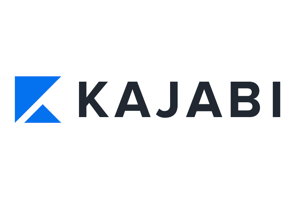
Recent rankings
Latest chart positions across Apple Podcasts and Spotify rankings.
Apple Podcasts
🇫🇷 France - howTo
21/04/2025#88🇫🇷 France - howTo
20/04/2025#90🇫🇷 France - howTo
19/04/2025#83🇫🇷 France - howTo
18/04/2025#81🇫🇷 France - howTo
17/04/2025#69🇫🇷 France - howTo
16/04/2025#60🇫🇷 France - howTo
15/04/2025#51🇫🇷 France - howTo
14/04/2025#42🇫🇷 France - howTo
13/04/2025#39🇫🇷 France - howTo
12/04/2025#36
Spotify
No recent rankings available
Shared links between episodes and podcasts
Links found in episode descriptions and other podcasts that share them.
See allRSS feed quality and score
Technical evaluation of the podcast's RSS feed quality and structure.
See allScore global : 53%
Publication history
Monthly episode publishing history over the past years.
Episode 154 - Teaching Tips & Strategies: Eddie Woo's Guide to Teachers' Growth
Season 6
lundi 26 février 2024 • Duration 55:54
I chat with educator Eddie Wu from Wootube about his teaching journey emphasising learning from failures, observation, and reflection. We discuss challenges teachers face, self-reflection, creating a supportive environment, and the importance of continuous learning and embracing new strategies. Eddie highlights the significance of seeking feedback, collaboration, and work-life balance. Ultimately, this conversation encourages a culture of continual learning and excellence in education.
Chapters
0:00:00 Introduction to Effective Teaching Podcast
0:00:18 Interview with Eddie Wu from Wootube
0:00:55 Eddie's journey into teaching
0:01:55 Falling in love with teaching
0:02:09 Early teaching experiences
0:03:40 Eddie's journey to improve as a teacher
0:09:20 Learning from failures in teaching
0:10:57 Observing other teachers in action
0:14:17 Challenges in keeping students engaged
0:14:24 Teachers' reluctance to be observed
0:15:21 Overcoming apprehension in observation
0:17:03 Eddie's fear teaching advanced mathematics
0:21:11 Establishing trust in teacher observations
0:22:55 Teaching as a craft, not just science
0:24:01 Shifting language in feedback for improvement
0:27:24 Learning and Growth
0:27:42 Exploring Professional Development Tools
0:35:57 Advice for New Teachers
0:48:39 Achieving Work-Life Balance
Long Summary
We delve into the journey of educator Eddie Wu from Wootube, known for his math tutorials on YouTube. Eddie's passion for teaching stemmed from a desire to help others learn, leading him on a path of continuous improvement. He emphasises the value of learning from failures and stresses the significance of observation and reflection in teaching practices. The discussion between Dan and Eddie explores the challenges teachers face with classroom observations and the importance of feedback and growth.
The conversation evolves to touch on the evolution of teaching practices, the role of self-reflection in professional growth, and the need for a supportive learning environment. They share insights into the inner fears and concerns of teachers, emphasising the importance of creating a culture of psychological safety for educators. The significance of continuous learning and improvement in teaching is highlighted, along with the transformative impact of self-assessment through recording classroom lessons.
Furthermore, the dialogue underscores the idea of teachers as lifelong learners, advocating for ongoing professional development, collaboration, and embracing new teaching strategies. They emphasise the value of seeking feedback, engaging with research, and learning from diverse sources to adapt to the evolving needs of students. The conversation concludes by emphasising the complexities, challenges, and rewards of teaching, highlighting the continuous quest for growth, learning, and collaboration in the pursuit of excellence in education.
We explore various ways to enhance ourselves as educators, offering advice for new teachers and experienced educators alike. The importance of seeking input from peers, experimenting with different techniques, and embracing feedback is stressed as crucial for professional growth. Addressing the issue of teacher workload, we discuss the dynamic nature of achieving work-life balance through reflection, self-assessment, and prioritising relationships amidst professional demands.
Through shared experiences, reflections, and collaborative efforts, educators can navigate the multifaceted challenges of teaching and foster a culture of continual learning within the education community. The conversation with Eddie provides valuable insights into striving towards excellence, enriching teaching practices, and positively impacting the lives of students through continuous growth and development.
Episode 153 - How To Use AI Effectively With Dr. Sabba Quidwai
Season 6
dimanche 18 février 2024 • Duration 27:10
We explore the integration of AI in education with Sabba, an experienced educator and AI enthusiast. Sabba highlights the importance of prioritizing human skills and pedagogy before incorporating AI tools in the classroom. She emphasizes the significance of identifying specific issues that AI can help solve and suggests utilizing AI for tasks like design thinking to promote pedagogical innovation. Sabba underscores the value of developing critical thinking skills in teachers and students when utilizing AI and encourages educators to reimagine traditional teaching methods to create an ideal learning environment with AI as a supportive tool. Finally, Sabba calls on educators to embrace change, leverage technology for enhanced teaching practices, and prioritize well-being, relationships, and innovation in the era of AI. Visit designingschools.org to learn more about Sabba and her insights.
Chapters0:00:00 Introduction to Effective Teaching Podcast
0:03:59 Utilising AI Tools for Effective Teaching
0:12:20 Identifying Problems Before Implementing AI
0:17:12 Leveraging AI for Student Creativity & Critical Thinking
0:20:27 Importance of Critical Thinking in AI Utilisation
0:22:19 Prioritising Personal Growth in AI Integration
Long SummaryIn this episode, we dive into the world of AI and its impact on education with Saba, a seasoned teacher and AI enthusiast. Saba shares her journey from teaching history in 2007 to embracing AI tools to enhance teaching practices. She emphasises the importance of prioritising human skills and pedagogy before integrating AI into the classroom.
Saba advocates for a thoughtful approach to using AI, focusing on identifying the problems teachers want to solve before selecting AI tools. She recommends leveraging AI to streamline tasks like design thinking and lesson planning, allowing teachers to innovate their pedagogies effectively.
Furthermore, Saba highlights the necessity of developing critical thinking skills in both teachers and students when utilising AI. She encourages educators to ask meaningful questions, think outside the traditional teaching methods, and envision the ideal learning environment by utilising AI as a supportive tool rather than a replacement.
Saba emphasises the need for educators to reconnect with the outcomes they wish to achieve, embrace change, and let technology enhance their teaching practices. She invites teachers to reconsider ingrained educational practices, discover new possibilities with AI, and prioritise well-being, relationships, and innovation in the age of AI revolution. To learn more about Saba and her work, visit designingschools.org.
Episode 144 - 20 Ways To Motivate Your Students
Season 6
jeudi 30 novembre 2023 • Duration 23:38
I discuss 20 strategies to motivate students. I highlight the importance of creating a positive learning environment, setting clear expectations, and using varied teaching methods. Offering choices, setting goals, and providing positive reinforcement are effective ways to increase motivation. Connecting learning to personal interests and allowing student autonomy also play a key role. Incorporating competitions, showing enthusiasm, and facilitating self-reflection are additional strategies. Celebrating diversity and creating a sense of belonging in the classroom foster deep learning. Subscribe to teacherspd.net for a checklist of these strategies and upcoming updates. Let's motivate our students and keep evolving as effective teachers.
Chapters0:00:00 Introduction to the Effective Teaching Podcast
0:00:19 Creating a Positive Learning Environment for Student Motivation
0:03:20 Setting Clear Expectations for Student Motivation
0:04:21 Using Varied Teaching Methods to Motivate Students
0:07:26 Reflecting on progress and motivating with constructive feedback
0:08:48 Incorporating technology and varying teaching methods for motivation
0:15:16 Utilising Competitions for Motivating Students
0:16:27 Showing Enthusiasm as a Teacher to Boost Student Motivation
0:17:47 Facilitating Self-Reflection and Progress Evaluation
Long SummaryIn this episode of the Effective Teaching Podcast, the host, Dan, discusses 20 ways to motivate students. He emphasises the importance of creating a positive learning environment where students feel safe to take risks. Dan also highlights the need to set clear expectations and communicate learning objectives to provide students with a roadmap for success. Additionally, he suggests using varied teaching methods to keep students engaged and avoid monotony in the classroom. The host encourages listeners to subscribe to the website, teacherspd.net, to receive a checklist with all the motivating strategies discussed.
We need to vary our teaching methods to keep our students motivated. This can include using group tasks, debates, and incorporating technology. Changing things up and providing a different learning experience can excite students and get them engaged. It's important to make the learning relevant to their lives and show them the practical applications of what they're learning. Providing constructive feedback that highlights their progress and sets clear next steps helps students see their improvement and stay motivated. Encouraging collaboration among students fosters a sense of community and accountability. Incorporating technology can also be motivating, but it's important to balance it with other teaching methods. By incorporating different technologies and occasionally going back to traditional methods, we can keep our students engaged and excited about learning.
In order to motivate students in their learning, there are several strategies that we can implement. First, we should offer students choices, such as allowing them to choose the content or where they apply their skills and knowledge. This sense of autonomy increases motivation. Next, setting goals is important but it's necessary to regularly go back and remind students of these goals, refining them as needed. Positive reinforcement is another effective strategy, where we recognize and reward students for their positive behaviors and hard work. It's not necessary to give treats or privileges, simple recognition and praise will do. Connecting learning to personal interests is also crucial, as it allows students to engage more with the subject matter. By getting to know our students, we can find ways to incorporate their interests into our teaching. Providing autonomy and allowing students control over their learning is another way to motivate them. This could include giving them choices in the design of their learning or co-designing lessons with them. Creating a sense of ownership is also important, involving students in decision-making processes and allowing them to have a say in classroom rules and structure. Finally, making learning fun is key to keeping students engaged. It's important to find ways to make the learning experience enjoyable, such as incorporating hands-on activities, changing environments, and making the classroom a lively and energised place. By implementing these strategies, we can effectively motivate our students in their learning journey.
In this part of the podcast, we discuss several strategies to motivate students in the classroom. One strategy is to utilise competitions, either by focusing on improvement as a group or by having straight-out competitions. Competition can motivate higher achievers, but not all students may be motivated by it. Showing enthusiasm for the subject matter is another effective strategy. By expressing excitement and passion, even for topics that may not be considered cool, you can increase student motivation. Facilitating self-reflection is also important. Encouraging students to reflect on their progress and set goals helps them see their growth and motivates them to continue learning. Incorporating real-world examples and scenarios helps students make connections to their own lives and increases motivation. Providing supportive resources, such as scaffolding and templates, helps students see the steps to success and reduces their fear of failure. Lastly, celebrating diversity and appreciating the different backgrounds and contributions of students fosters a positive and inclusive learning environment.
Fostering a sense of belonging in the classroom and celebrating different opinions can drive deeper learning. When a student disagrees with me, I encourage them to explain their perspective so we can understand each other better. This acceptance and celebration of different perspectives leads to deeper learning in the class. Even if a student is completely wrong, I can correct their misunderstanding and motivate them to learn. These strategies can help motivate students in the classroom. If you want a PDF of these strategies, go to teacherspd.net and subscribe. By subscribing, you'll also receive emails about new episodes and upcoming courses. I hope you start applying these strategies and share your success stories with me. I am even open to interviewing teachers who have found success with these strategies. Let's keep trying new things and reflecting on our teaching process. Don't forget to subscribe and join me for the next episode of the Effective Teaching Podcast.
Episode 21 Part 3 of the Dynamic Learning Framework with Kasey Bell
Season 1
samedi 19 octobre 2019 • Duration 15:43
In this episode, Dan talks with Kasey Bell from Shake Up Learning about her Dynamic Learning framework that is the foundation of her book "Shake Up Learning: Practical Ideas to Move Learning from Static to Dynamic". This is Part 3 - Beyond the Walls of a 5 part series digesting this framework.Kasey Bell is a former middle school teacher turned award-winning digital learning coach at Shake Up Learning. She is also an international speaker, author of Shake Up Learning: Practical Ideas to Move Learning From Static to Dynamic, blogger at ShakeUpLearning.com, host of The Shake Up Learning Show Podcast, and co-host of The Google Teacher Tribe Podcast. The Dynamic Learning Series with Kasey Bell by Daniel Jackson is licensed under a Creative Commons Attribution-NonCommercial-ShareAlike 4.0 International License.Join the Facebook CommunityThe Dynamic Learning FrameworkThe Dynamic Learning Framework was designed by Kasey Bell to bring together many of the various aspects of 21st century learning. based on the 4 Cs - collaboration, creativity, critical thinking and communication. This framework aims to help teachers look beyond the technology. To stop seeing technology as just as a tool, but to see it as an opportunity to stretch what we do in our classrooms. To move away from the static old school approach to education as a system for conformity, to see education as a dynamic entity that can be used to go above and beyond what used to be possible. To make learning more engaging, meaningful, connected, collaborative and targeted at developing the skills required for lifelong learning.Beyond the BellLearning doe not stop when the bell rings. Digital tools and devices enable students to continue to learn, collaborate, go deeper into their learning and grow their learning skills to move towards lifelong learners. Learning is accessible 24/7 with technology and we need to shift both ours and our student's mindsets to ones that look for learning to happen anytime, anywhere, and students can OWN IT!Going beyond the bell is all about a shift in mindset. This is not about setting more homework for the students, but about changing their attitude towards learning. It is about encouraging students to take ownership of learning, making learning engaging and meaningful, as well as inspiring students to see learning as something they do for them not for the school. A vital aspect of beyond the bell is to set goals for learning with your students, where they know what the target is and how to get there. To help keep students motivated celebrate their success and track their progress through the use of smaller sub-goals.12 ways to Shake Up Learning with KaseySubscribe to the email list and download a FREEBIE!Read the Shake Up Learning Book by Kasey BellParticipate in the Shake Up Learning Book StudyWatch a FREE webinar Take an online course (Google Classroom, Google Slides, and more!)Get Google CertifiedBring Kasey Bell to your school or eventJoin the FREE Shake Up Learning CommunityListen to the Shake Up Learning Show PodcastConnect with Shake Up Learning on socialFollow and use the #ShakeUpLearning hashtagListen to the Google Teacher Tribe Podcast
Episode 20 Part 2 of the Dynamic Learning Framework with Kasey Bell
Season 1
jeudi 10 octobre 2019 • Duration 11:44
In this episode, Dan talks with Kasey Bell from Shake Up Learning about her Dynamic Learning framework that is the foundation of her book "Shake Up Learning: Practical Ideas to Move Learning from Static to Dynamic". This is Part 2 - Beyond the Grade Level and Subject Area of a 5 part series digesting this framework.Kasey Bell is a former middle school teacher turned award-winning digital learning coach at Shake Up Learning. She is also an international speaker, author of Shake Up Learning: Practical Ideas to Move Learning From Static to Dynamic, blogger at ShakeUpLearning.com, host of The Shake Up Learning Show Podcast, and co-host of The Google Teacher Tribe Podcast. The Dynamic Learning Series with Kasey Bell by Daniel Jackson is licensed under a Creative Commons Attribution-NonCommercial-ShareAlike 4.0 International License.Join the Facebook CommunityThe Dynamic Learning FrameworkThe Dynamic Learning Framework was designed by Kasey Bell to bring together many of the various aspects of 21st century learning. based on the 4 Cs - collaboration, creativity, critical thinking and communication. This framework aims to help teachers look beyond the technology. To stop seeing technology as just as a tool, but to see it as an opportunity to stretch what we do in our classrooms. To move away from the static old school approach to education as a system for conformity, to see education as a dynamic entity that can be used to go above and beyond what used to be possible. To make learning more engaging, meaningful, connected, collaborative and targeted at developing the skills required for lifelong learning.Beyond the BellLearning doe not stop when the bell rings. Digital tools and devices enable students to continue to learn, collaborate, go deeper into their learning and grow their learning skills to move towards lifelong learners. Learning is accessible 24/7 with technology and we need to shift both ours and our student's mindsets to ones that look for learning to happen anytime, anywhere, and students can OWN IT!Going beyond the bell is all about a shift in mindset. This is not about setting more homework for the students, but about changing their attitude towards learning. It is about encouraging students to take ownership of learning, making learning engaging and meaningful, as well as inspiring students to see learning as something they do for them not for the school. A vital aspect of beyond the bell is to set goals for learning with your students, where they know what the target is and how to get there. To help keep students motivated celebrate their success and track their progress through the use of smaller sub-goals.12 ways to Shake Up Learning with KaseySubscribe to the email list and download a FREEBIE!Read the Shake Up Learning Book by Kasey BellParticipate in the Shake Up Learning Book StudyWatch a FREE webinar Take an online course (Google Classroom, Google Slides, and more!)Get Google CertifiedBring Kasey Bell to your school or eventJoin the FREE Shake Up Learning CommunityListen to the Shake Up Learning Show PodcastConnect with Shake Up Learning on socialFollow and use the #ShakeUpLearning hashtagListen to the Google Teacher Tribe Podcast
Episode 19 Thom Markham the Godfather of PBL reveals the next steps in PBL
Season 1
mercredi 2 octobre 2019 • Duration 20:45
What is next in Project-Based Learning - listen to what Thom has to say above.Dan talks with the godfather of PBL - Thom Markham who reveals where project-based learning should be headed and remarkably it is also where it has come from. This is a great listen if you are keen to discover more about PBL and what it can do for your students.Thom Markham the Godfather of PBL reveals he next steps in PBL by Daniel Jackson is licensed under a Creative Commons Attribution-NonCommercial-ShareAlike 4.0 International License.Join the Facebook CommunityLearn more about Thom's Workshop in SydneyClick here7 Steps for Qulity PBLFinding an authentic challenge a good problem to be solvedDriving questionDecide what they do at the end Assess the project - determine whether it is goodHigh-quality performance rubrics (know and do)Deep explicit rubrics exactly what students need to doTeaching and learning activities - set the project and get ideas from the studentsTurn students lose on the doing - Team learning (teamwork, accountability, responsibility, doing work, drafts and revision, design thinking)Showcase or present (Mastery Level) - a higher level of problem-solving and mastery of the disciplineThe next step for PBL helps to create lifelong learnersA focus on human development “strengths-focused or strengths-based approach”Individual growth, Developing wellbeingProblem-solving and problem findingSelf-directed throughout How do you do this?Know your studentsA kind and caring classroomStudent-teacher partnership for best performanceStudents set goals and objectives, how they want to grow and where they want to get to and reflect upon itRubrics that include curiosity, work ethic andNEW curriculum with wellbeing integrated throughout A Head Heart and Hands ApproachWhere to startDistinguish between general projects and PBLPBL incorporates projects BUT it uses a strong methodology to encourage better outcomesRubricProblem questionsAuthenticityPlung in - design a PBL unit as best you can and learn as you go.Get feedback from students etcRequires a mind shift.Think "What do students need to appreciate about the topic?" - go for wonder and interestAsk students, what are they interested in.The teacher is the Co-LearnerLearn more about Thom's Workshop in SydneyClick here
Episode 18 Part 1 of the Dynamic Learning Series with Kasey Bell
Season 1
dimanche 22 septembre 2019 • Duration 15:27
In this episode, Dan talks with Kasey Bell from Shake Up Learning about her Dynamic Learning framework that is the foundation of her book "Shake Up Learning: Practical Ideas to Move Learning from Static to Dynamic". This is Part 1 - Beyond the Bell of a 5 part series digesting this framework.Kasey Bell is a former middle school teacher turned award-winning digital learning coach at Shake Up Learning. She is also an international speaker, author of Shake Up Learning: Practical Ideas to Move Learning From Static to Dynamic, blogger at ShakeUpLearning.com, host of The Shake Up Learning Show Podcast, and co-host of The Google Teacher Tribe Podcast. The Dynamic Learning Series with Kasey Bell by Daniel Jackson is licensed under a Creative Commons Attribution-NonCommercial-ShareAlike 4.0 International License.Join the Facebook CommunityThe Dynamic Learning FrameworkThe Dynamic Learning Framework was designed by Kasey Bell to bring together many of the various aspects of 21st century learning. based on the 4 Cs - collaboration, creativity, critical thinking and communication. This framework aims to help teachers look beyond the technology. To stop seeing technology as just as a tool, but to see it as an opportunity to stretch what we do in our classrooms. To move away from the static old school approach to education as a system for conformity, to see education as a dynamic entity that can be used to go above and beyond what used to be possible. To make learning more engaging, meaningful, connected, collaborative and targeted at developing the skills required for lifelong learning.Beyond the BellLearning doe not stop when the bell rings. Digital tools and devices enable students to continue to learn, collaborate, go deeper into their learning and grow their learning skills to move towards lifelong learners. Learning is accessible 24/7 with technology and we need to shift both ours and our student's mindsets to ones that look for learning to happen anytime, anywhere, and students can OWN IT!Going beyond the bell is all about a shift in mindset. This is not about setting more homework for the students, but about changing their attitude towards learning. It is about encouraging students to take ownership of learning, making learning engaging and meaningful, as well as inspiring students to see learning as something they do for them not for the school. A vital aspect of beyond the bell is to set goals for learning with your students, where they know what the target is and how to get there. To help keep students motivated celebrate their success and track their progress through the use of smaller sub-goals.12 ways to Shake Up Learning with KaseySubscribe to the email list and download a FREEBIE!Read the Shake Up Learning Book by Kasey BellParticipate in the Shake Up Learning Book StudyWatch a FREE webinar Take an online course (Google Classroom, Google Slides, and more!)Get Google CertifiedBring Kasey Bell to your school or eventJoin the FREE Shake Up Learning CommunityListen to the Shake Up Learning Show PodcastConnect with Shake Up Learning on socialFollow and use the #ShakeUpLearning hashtagListen to the Google Teacher Tribe Podcast
Episode 17 The importance of knowing why with Nat Littler
Season 1
dimanche 8 septembre 2019 • Duration 12:23
In this episode, Dan talks with Nat Littler about how she helps encourage lifelong learning in her classroom. In this interview, Nat explains the importance of providing a why for learning given topics and how providing content real-world applications helps motivate and engage her students. Nat also explains the importance of teachers being lifelong learners themselves.The importance of knowing why with Nat Litter by Daniel Jackson is licensed under a Creative Commons Attribution-NonCommercial-ShareAlike 4.0 International License.Join the Facebook CommunityWhat do you do to promote lifelong learning in your classroom?Be a lifelong learner yourselfShare your learning experiences and failures with your students.Try new things in your classroom and be fine with them not workingHow does the provision of meaning and connection promote lifelong learning?It allows you to focus on the why? Why are you teaching this topic etc?Provides real meaning for the students and motivation to learnStudents who are motivated to learn develop better learning skills to transfer beyond the classroomUsing project-based learning, critical inquiry and flipped learning help to increase student active contributions to learning and reflect the real world.Give it a go!Make sure you can answer "why?"Provide this information up-front with your students.Tell your students about a time that you failed at learning something, share with them something you are currently learningIf you are not currently learning something, then find a book and begin to read. Share what you learn with your students.
Episode 16 Celebrating Learning Success
Season 1
dimanche 1 septembre 2019 • Duration 08:24
In this episode, Dan discusses the importance of celebrating student learning success. He describes how to do this well and connects the celebrations with learning goals and sub-goals. Dan also explains how celebrating student learning success helps to create lifelong learners.Celebrating Learning Success by Daniel Jackson is licensed under a Creative Commons Attribution-NonCommercial-ShareAlike 4.0 International License.Join the Facebook CommunityWhatCelebrating success in learning links back to goal setting, creating criteria and exemplars.Celebrate the subgoals and the big winsWhy?Because learning is hard workSetting goals and achieving them is funBut, students need to know when they have achieved the goals and subgoalsCelebrating the success, not only shows students that they were successful but helps them to identify as a successful learnerIt provides further motivation for future learning and a reference point to refer back to when things get hard once again.How?This does not have to be anything bigSimply point out where they have been successfulGive a high-five, a sticker or just congratulate them (publically or not)Refer back to times of success to help motivate them when they are doing it hard it helps to motivate studentsOf course, you can also go bigger:Email or call home to let parents know and let them celebrate with their childReport comments, and gradesCertificates at assembliesGamify your classroom etcJust make sure it is repeatable and fair for everyone who succeedsLifelong LearningAs the students experience success they begin to identify themselves as successful learnersThis provides them with plenty to look back on to help motivate them when they are doing the learning on their ownIt also helps them to identify their own progress in the future which will help them set goals and achieve them in future learningFinally, more success will also increase their confidence and their willingness to try hard things. This in return will help them to develop the skills for learning that they need to become lifelong learnersGive it a go!This week Identify any chance you can to celebrate your student’s learning success.Send an email home to celebrate, Give high fivesGamify your classroomGive out a certificateOr simply get alongside a student and tell them you are proud of the hard work they put in and the achievements they have madeAnother great thing to do is to identify past successes and remind them of those times. The hard work they put in and the learning they achieved. Especially if they need some motivation.
Episode 15 Reading for Lifelong Learning
Season 1
dimanche 18 août 2019 • Duration 08:05
In this episode, Dan Jackson discusses why he sees reading as the number 1 skills needed for lifelong learning. He discusses how you can use NAPLAN results to come to know your students and find teaching strategies that will help them develop their reading.Reading for Lifelong Learning by Daniel Jackson is licensed under a Creative Commons Attribution-NonCommercial-ShareAlike 4.0 International License.Join the Facebook CommunityReading the most important skill for lifelong learningCurrently I am homeschooling my son who has just started school. One of the focuses for me over the coming years is to teach him how to read well.He has already shown an interest in Learning and particularly enjoys using the App “Reading Eggs", but of course I cannot leave this learning to him doing lessons on an app. From a young age my wife and I have read to my son… actually, I read to him while my wife was still pregnant. And he still loves having books read to him. But of course I want to shift his skills so that he can read on his own. And as I focus on this and think about the importance of this skill, I have realised just how important a skill it is for his future.Once he can read, he can then learn anything he likes.With the internet providing so much content these days and the increased accessibility to academic works, he can literally learn about anything on his own once he can read.The same is true for our students. Being able to read is so key to their success as lifelong learners that we do a massive disservice when we don't have this as a focus in every subject and each activity we do.Previous workshopI used to run a literacy workshop for teachers which really began with knowing your studentsI remember getting massively frustrated when I first began to learn more about literacy because I was finally exposed to the insights we can get into our studebts from NAPLAN resultsNow our culture and society and many schools, especially principals have given NAPLAN a bad wrap using it as a way to compare one school against another.I remember constantly being told that our school was ranked higher than surrounding schools, so we were doing well, but that was as much as we were told.However, reality is that the results from NAPLAN provide you with fantastic insights into the strengths and weaknesses of the students in your class.If you, like many teachers have not seen your students results from NAPLAN, I encourage you to ask your executive for access and for some training on how to navigate and interpret results. I know they used to, and hopefully still do, provide graphs that show the growth of each individual student which is real data you can use to see if students skills are improvingClass profileOne of the key steps in the workshop I used to run was to use the results from NAPLAN to create class profiles. All we did was enter each students overall result for Reading, Writing, Spelling, Grammar and Numeracy.We then colour codes the results, red for students who scored lower than 50% and green for over 85% this then provided a quick snap shot of what the students know and don't knowFrom here, if I had a student who any red I would create an individual profile for them breaking the skills down further.Finally, I would find teaching strategies that matched the weaknesses. Amazingly, NAPLAN provide these as well. Give it a go!Get access to your NAPLAN resultsCreate a profile, identify an area for at least 1 student, but obviously the more you can help at once the better Then find the strategy you can use to help your student to develop their reading ability.Teaching Resources from NAPLAN
